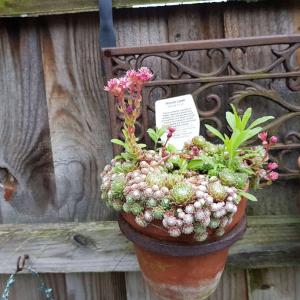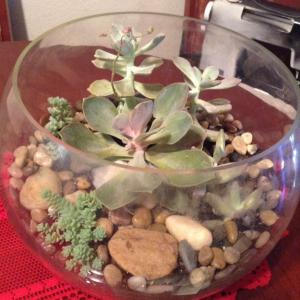meriunkat
2017年07月31日

At a friend's house, she was the person who inspired me to start my own succulent garden.


















3
0
Joy4526:Wow they are all so beautiful😊
Ueca:We're all crazy 😁
e.morales
2017年07月19日

we recently brought this succlent home from thr green house where it was very warm and humid and is now living on the window sill. It was watered two days ago. what type of succulent is this?




0
0
dIgfi34ly59
2017年06月27日

Can anyo identify this plant? I live in the Pacific Northwest; this, clearly, isn't a native species, but it was here when I bought the house. The three photos show an overall view, the leafy base, and the budding flowers at the top of the woody stem. This beautiful plant is in a drip-irrigated rock garden.






0
0
求助
YiLam
2017年06月24日

i have those things growing in front of my house. Can someone tell me what is this?
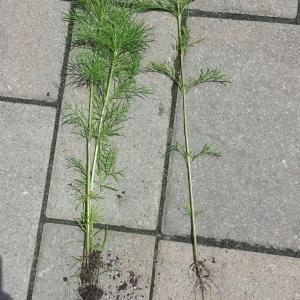
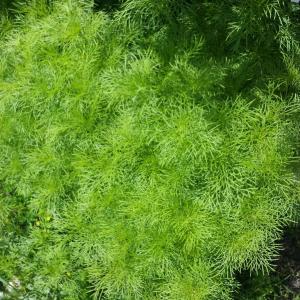


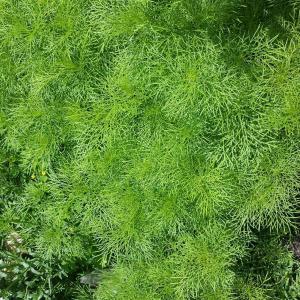





3
0
Pommy Mommy:does it smell kind of like black licorice? because if it does I know exactly what it is! It's "Fennell"! I made the mistake of buying one little seeding about 4 freaking years ago and it almost completely taken over my whole front yard and wherever the wind blows LOL I have finally tamed it (meaning gotten rid of most of it because I hate it) it seems to grow in every crack, nook and cranny, I'm still finding a sprout of it here and there. luckily our the new (to us, century) house is almost finished with its renovations. and since it was built in 1904 there's over a hundred and fourteen years of vegetation planted so im looking forward exploring and taming ( I've already found over a dozen black raspberry bushes)
YiLam:@CrazyPerfectionist huh?? what are those??
CrazyPerfectionist:Here is
Babs
2017年06月22日

I cant identify this thorny vine. i live in Northeastern Ohio area. is it poisonous? Does it bear fruit? I just moved to this house and am finding all sorts of vines but this one stumps me
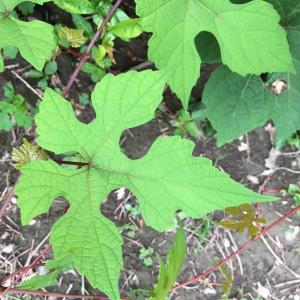

0
0
Erin Rose
2017年05月28日

I just bought a house and know NOTHING about gardening or taking care of plants. I am trying really hard and would like help identifying these plants so i can research how to take care of them!


















1
0
文章
Colorful
2017年05月23日
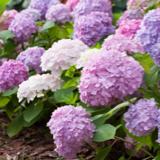
You love growing plants indoors, but they die soon (or you kill them)? This won’t happen again if you avoid these 9 mistakes!
Having plants in your house is like a baby to care. There are many things (if you’re new) you do not know when you plan to keep a plant in the house or the garden. If you are wondering WHY YOUR INDOOR PLANTS ARE DYING even after taking so much care and extra pampering, then there are some mistakes that you are doing. Here are the nine little (or the BIGGEST) mistakes which can kill your plant. So avoid doing them!
1. Keeping the plant in a location that is not suitable

Every plant has its specific needs, do’s and don’t do’s. If you don’t know what they are, acquire the knowledge from a florist, books or from the best place, the internet (consider our website)! Some plants are very specific with their placement indoor or outdoor. Placing them in an unsuitable location is certainly kill them sooner or later, quickly or gradually.
Mostly the plants growing indoors die due to this reason. You must read what a plant needs before you seek a place for it. Some plants require shade, indirect light or direct sunlight, while some need moisture. If a plant needs more level of moisture, then keep it in a shaded area. If not done so, all the moisture in the soil will dry up, and this will certainly kill the plant.
2. Changing the location to and fro
Plants adjust to the spot where they kept for a while, either at home or outdoors. When they moved often, it becomes difficult for them to adapt quickly to the different conditions of the new environment. Also, moving the plants frequently can hurt the growth of your houseplant.
3. Wrong soil
We say– Soil is the key! And when it comes to growing plants indoors, you can’t compromise with soil. A soilless potting mix is what we suggest. You can also make your own or choose high quality, organic soil mix.
Make sure that the soil you mix or buy is according to your plant’s needs. Some plants do better in moisture retaining, dense soil, while other plants, such as cacti, need light, fast-draining soil with high sand and peat content, to prevent root rot.
4. Overwatering

Even the experienced gardener make this mistake, this is the problem with container gardening. People who are new to gardening or growing plants do this– they think that giving more water to the plant will keep it healthy and let it grow faster. However, especially indoors, where the sun is scarce, the situation is different. Keeping plants on a little bit drier side is a good idea but if the plant you’re growing is a moisture loving plant then keep the soil slightly moist.
It is recommended that you do the research about the watering needs of your plant. Also, the most important factor that decides the watering requirements of a plant is the climate in which you’re growing it. Usually indoors, watering the plants only once a week should be enough though some of the low maintenance plants require even less water. It’s a good idea to feel the soil in every three days and when you water, water the plants thoroughly.
5. Keeping plants in too much or too little light
It is true that plants need light, but indoor plants are tender, low sunlight plants and exceeding their light requirement can kill them. It is always better to know about your plant before placing it anywhere. Some plants require little light for healthy growth. If they are supplied with more light, then this can kill or debilitate them.
6. Exposing to extreme temperatures
Indoor plants are indoor plants because they like indoor conditions and unvarying temperature, there are only a few that like high or low temperature than normal average room temperature. The safest daytime temperature for indoor plants is 65-75 F (18-24 C) or somewhere around it, whereas, during night time, fall in 5-10 F in temperature is optimum. Moderate temperature works well for houseplants and having a constant temperature leads to healthy growth.
7. Keeping the plant rootbound

If you have a houseplant for a long time and you do not re-pot it then it, becomes bound to the pot you have planted it in. In optimum conditions, (if the plant is not slow-growing) plants outgrow the pot within a year or two. When leaves start to turn yellow or if you see the roots popping out, it is the signal to re-pot the plant. This indication is due to less space and freshness to grow healthy. When sending Plants for housewarming, you tend to gift it is small pot, but later it can be repotted in larger spaces.
Leaves turning yellow are the indication of insufficient space, water, nutrients and air. So when you see these signs, take the right step and re-pot the plant in a larger space.8. Neglecting the plants
Many of us, plant the plants and forget about them. Underwatering is one of the consequences of it. Neglecting plants is the reason why most people kill the indoor plants. Not looking at plants suffering from pests or diseases, missing to prune, no regular fertilization. All this must be avoided.
9. Not cleaning the leaves
Is it important to clean the leaves of the houseplants? Well, yes! For two reasons you should clean the leaves of your houseplants. First, it makes them look attractive. Second, it makes them HEALTHY! Already, the sun is scarce indoors, and the layer of dust accumulated on the foliage of houseplants contributes to blocking the direct or indirect sunlight and reduce the plant’s ability to photosynthesize. And a result you get a weak and stressful plant. Gardening Know How has an important article on this. Check out!
Having plants in your house is like a baby to care. There are many things (if you’re new) you do not know when you plan to keep a plant in the house or the garden. If you are wondering WHY YOUR INDOOR PLANTS ARE DYING even after taking so much care and extra pampering, then there are some mistakes that you are doing. Here are the nine little (or the BIGGEST) mistakes which can kill your plant. So avoid doing them!
1. Keeping the plant in a location that is not suitable

Every plant has its specific needs, do’s and don’t do’s. If you don’t know what they are, acquire the knowledge from a florist, books or from the best place, the internet (consider our website)! Some plants are very specific with their placement indoor or outdoor. Placing them in an unsuitable location is certainly kill them sooner or later, quickly or gradually.
Mostly the plants growing indoors die due to this reason. You must read what a plant needs before you seek a place for it. Some plants require shade, indirect light or direct sunlight, while some need moisture. If a plant needs more level of moisture, then keep it in a shaded area. If not done so, all the moisture in the soil will dry up, and this will certainly kill the plant.
2. Changing the location to and fro
Plants adjust to the spot where they kept for a while, either at home or outdoors. When they moved often, it becomes difficult for them to adapt quickly to the different conditions of the new environment. Also, moving the plants frequently can hurt the growth of your houseplant.
3. Wrong soil
We say– Soil is the key! And when it comes to growing plants indoors, you can’t compromise with soil. A soilless potting mix is what we suggest. You can also make your own or choose high quality, organic soil mix.
Make sure that the soil you mix or buy is according to your plant’s needs. Some plants do better in moisture retaining, dense soil, while other plants, such as cacti, need light, fast-draining soil with high sand and peat content, to prevent root rot.
4. Overwatering

Even the experienced gardener make this mistake, this is the problem with container gardening. People who are new to gardening or growing plants do this– they think that giving more water to the plant will keep it healthy and let it grow faster. However, especially indoors, where the sun is scarce, the situation is different. Keeping plants on a little bit drier side is a good idea but if the plant you’re growing is a moisture loving plant then keep the soil slightly moist.
It is recommended that you do the research about the watering needs of your plant. Also, the most important factor that decides the watering requirements of a plant is the climate in which you’re growing it. Usually indoors, watering the plants only once a week should be enough though some of the low maintenance plants require even less water. It’s a good idea to feel the soil in every three days and when you water, water the plants thoroughly.
5. Keeping plants in too much or too little light
It is true that plants need light, but indoor plants are tender, low sunlight plants and exceeding their light requirement can kill them. It is always better to know about your plant before placing it anywhere. Some plants require little light for healthy growth. If they are supplied with more light, then this can kill or debilitate them.
6. Exposing to extreme temperatures
Indoor plants are indoor plants because they like indoor conditions and unvarying temperature, there are only a few that like high or low temperature than normal average room temperature. The safest daytime temperature for indoor plants is 65-75 F (18-24 C) or somewhere around it, whereas, during night time, fall in 5-10 F in temperature is optimum. Moderate temperature works well for houseplants and having a constant temperature leads to healthy growth.
7. Keeping the plant rootbound

If you have a houseplant for a long time and you do not re-pot it then it, becomes bound to the pot you have planted it in. In optimum conditions, (if the plant is not slow-growing) plants outgrow the pot within a year or two. When leaves start to turn yellow or if you see the roots popping out, it is the signal to re-pot the plant. This indication is due to less space and freshness to grow healthy. When sending Plants for housewarming, you tend to gift it is small pot, but later it can be repotted in larger spaces.
Leaves turning yellow are the indication of insufficient space, water, nutrients and air. So when you see these signs, take the right step and re-pot the plant in a larger space.8. Neglecting the plants
Many of us, plant the plants and forget about them. Underwatering is one of the consequences of it. Neglecting plants is the reason why most people kill the indoor plants. Not looking at plants suffering from pests or diseases, missing to prune, no regular fertilization. All this must be avoided.
9. Not cleaning the leaves
Is it important to clean the leaves of the houseplants? Well, yes! For two reasons you should clean the leaves of your houseplants. First, it makes them look attractive. Second, it makes them HEALTHY! Already, the sun is scarce indoors, and the layer of dust accumulated on the foliage of houseplants contributes to blocking the direct or indirect sunlight and reduce the plant’s ability to photosynthesize. And a result you get a weak and stressful plant. Gardening Know How has an important article on this. Check out!
2
2
文章
Colorful
2017年05月23日

Take a look at these 19 Best low maintenance houseplants, if you’re new to growing plants indoors or find yourself lazy.
There are plenty of good things about having plants in the house. For starters, they clean up the air and smell wonderful. Secondly, they add a much-needed dash of color and accentuate the appeal of your interior.
1. Snake Plant
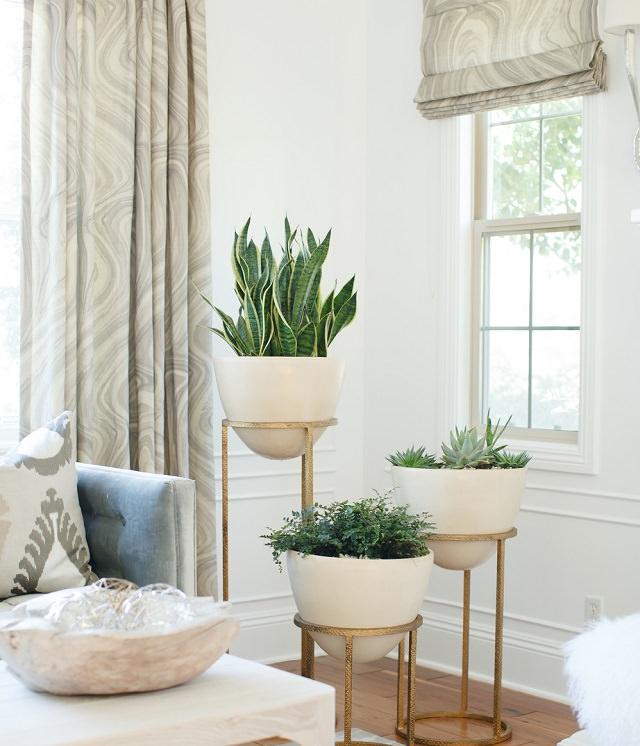
The snake plant is a low-maintenance succulent plant that thrives on neglect pretty well. If you have had little success with indoor gardening , do give the snake plant a try. All types of snake plant tolerate low light and prefer being potbound. The fact that it has thick and waxy leaves means it can withstand scarcity of water for prolonged periods of time. To put it simply, the snake plant is apt for lazy gardeners and two-week vacationers.
2. Tillandsia (Air Plants)
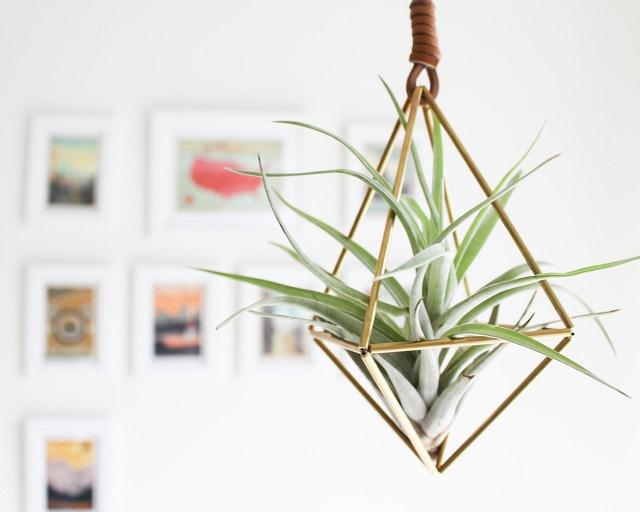
Tillandsia is a genus of air plants native to the deserts, forests and mountains of central and South America. Air plants are epiphyte, meaning they don’t need soil to grow. All you need is to mist or water them up once in a week. Some of the air plants also absorb dust– All this makes them interesting and low-maintenance houseplants. The air plants are a perfect choice for people who wish to add a touch of green to their home without much work.
3. Cast-Iron Plant

The cast-iron plant is true to its name- it’s literally indestructible. It can withstand extremes of conditions, including low light, low humidity, as well as a wide spectrum of temperatures. And it grows slowly, which means you don’t need to repot it often.
4. Kalanchoe

Kalanchoe is a genus of tropical succulent flowering plants, from the wide-leafed and bright ‘Flapjack’ to the compact Kalanchoe manginii or Kalanchoe blossfeldiana. Kalanchoes are easy to grow, all they ask for is a sunny spot and an occasional spritz of water. Both these varieties are architecturally interesting and last for so long with little attention from your end.
5. Philodendron
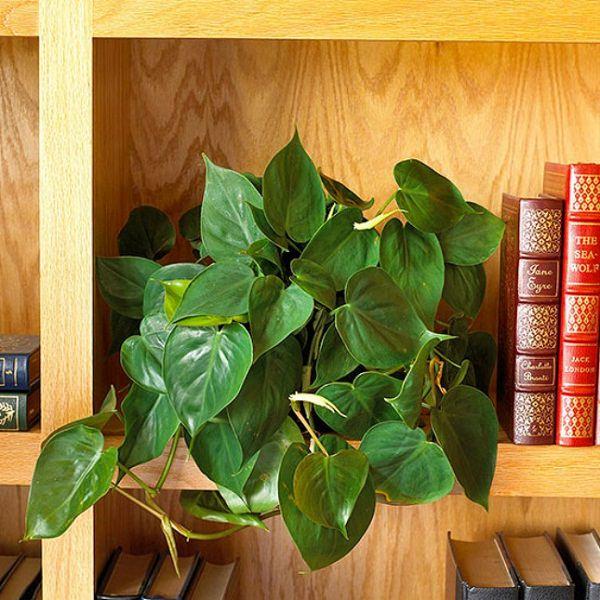
Philodendron is a fast-growing foliage houseplant with bottle-green heart-shaped leaves, similar to pothos. This plant is extremely durable and adapts well to low-light areas. Philodendron looks great in hanging baskets or when branches trailing down from above.
6. ZZ Plant
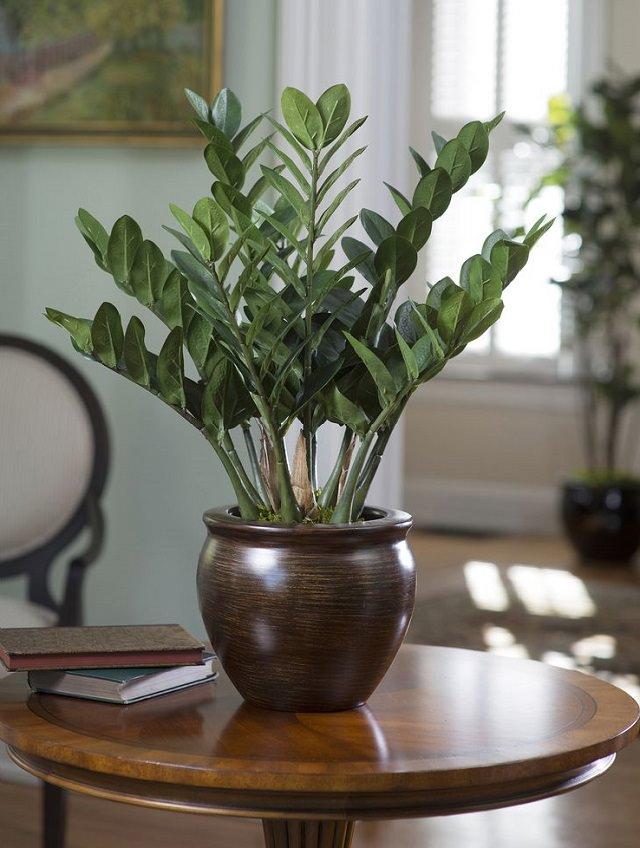
The ZZ plant is also known as the eternity plant as it lasts so long that it’s practically a challenge to kill it! Its fat succulent leaves are thick, fleshy leafstalks are so durable that they can be easily mistaken for plastic. Since the plant is a slow grower, you may want to purchase a large plant if in case you need a big specimen for your house.
7. Bromeliad
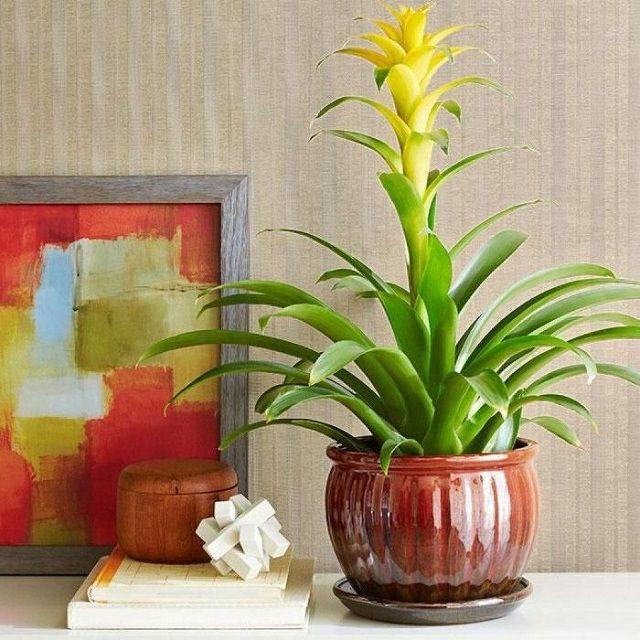
Bromeliad, like pineapple, belongs to the bromeliacea family. This plant produces a delicate pink inflorescence that is beautiful to look at. It lasts long too, and occasionally produces new side shoots that replace the original ones.
8. Jade Plant
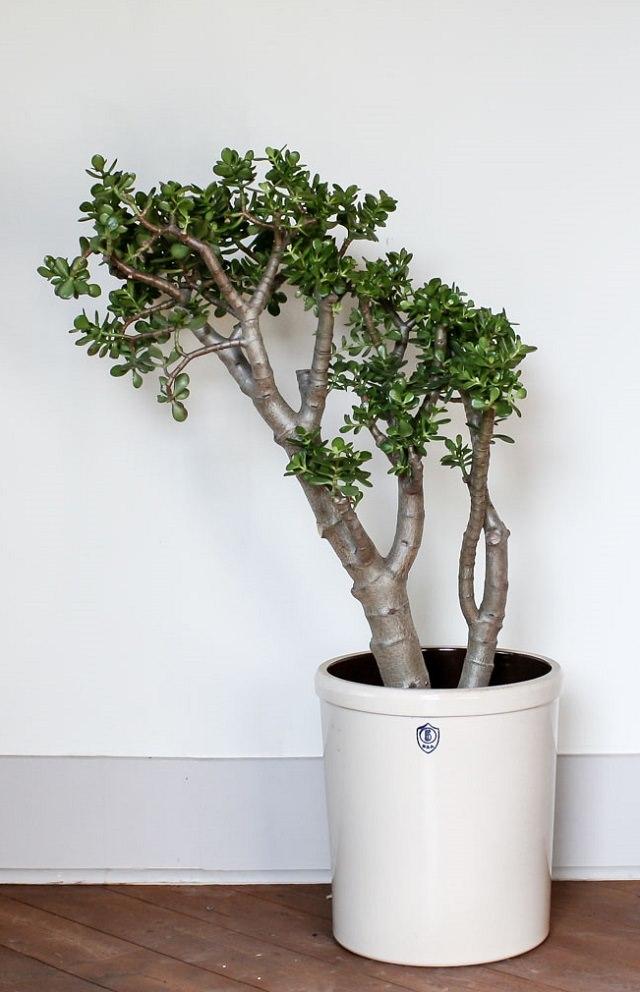
Native to South America, Jade is a low maintenance indoor plant. A succulent that retains water in its round, fleshy leaves. They thrive on neglect, so all you need to do is place them in a bright and airy spot and you’re done. As the thick trunk of jade plant easily gives it a mature look, it is also good for bonsai making.
Also Read: Best Plants and Trees for Bonsai
9. Succulents
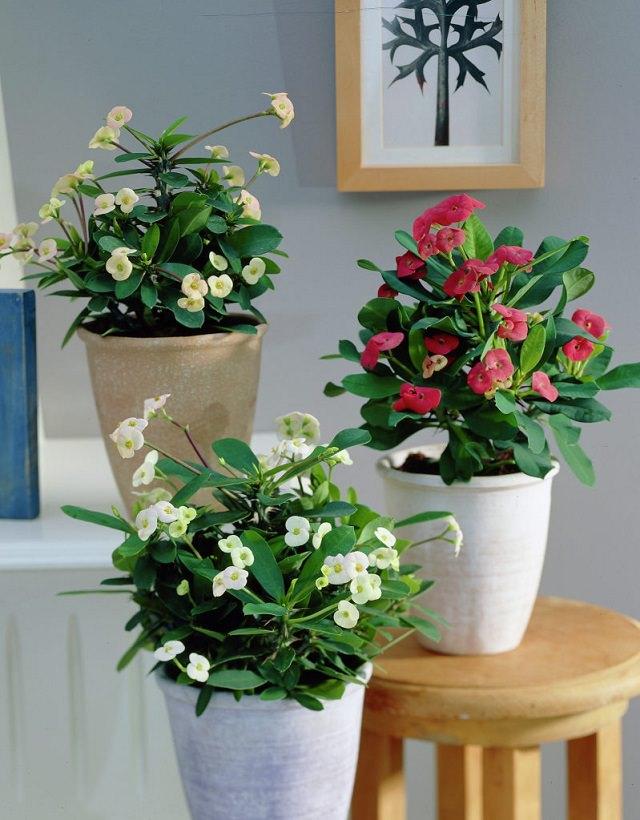
Whether its Crown of thorns or any other succulent most of them are the plants that are easy to grow indoors. Especially for those who forget to water the plants for days. If you’re interested in knowing more about the succulents that are easy to grow click here!
10. Pothos

Pothos is a fast-growing, leafy vine with striking variegated leaves that are tolerant to both irregular watering and low light conditions. The vine extends quickly, often leaving a 10-feet long, green trail over shelves or furniture. Though it’s not as drought-tolerant as many other plants in this list and demands some attention from you when it comes to watering.
11. Peace Lily

The peace lily is an easy-to-care houseplant that tolerates low light and low humidity really well and it seems like it is made for indoor conditions. Glossy, lance-shaped foliage with arched stems that surround the central flower spikes. It produces spoon-shaped blooms in summer usually but some varieties do blossom intermittently throughout the year. As an added bonus, it purifies noxious substances like formaldehyde and carbon monoxide from the air. If growing in a large pot peace lily can even go without water for a month. These plants thrive better on under-watering conditions.
12. Begonia
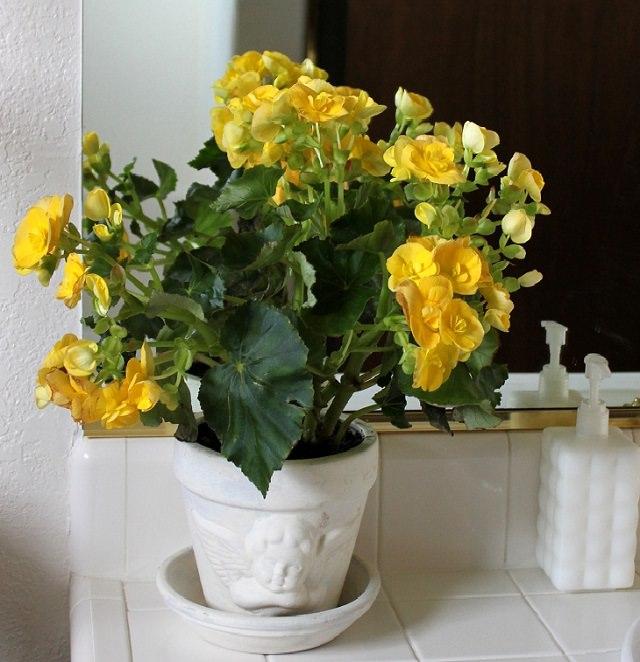
Begonias, with lush, green leaves and satiny flowers paint a pretty picture. Though they are more often thought of as outdoor plants, the fibrous and rhizomatous variants perform well indoors. They prefer humid environments, so you may want to water them 2-3 times a week in summer to make sure they stay healthy and green. They are not that fussy about light/temperature conditions. Bright, indirect sunlight works fine for them.
13. Aloe

Especially, Aloe Vera is one of the most multi-purpose houseplants in Aloe genus you can choose for indoor gardening. Its plump, spiraling leaves ooze out a soothing gel that can be used for burns and cuts. You can use it to relieve sunburns and even ingest its gel for a minty, cool feeling. Aloe loves to have some direct light and a moderate spritz of water every week or two.
Also Read: How to Care for an Aloe Plant
14. Boston Fern
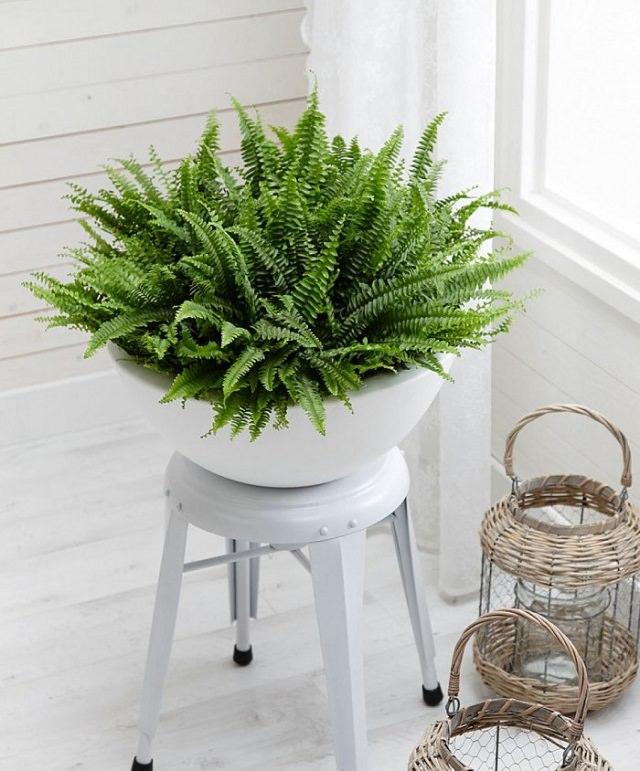
Renowned since the Victorian times, Boston fern is one of the most popular variants of fern. With its delicate, frilly leaves and lush, hanging fronds, it looks aesthetic when displayed in baskets hanging down from ceilings. Being the most drought-tolerant fern, it is easy to care for. All you have to do is to place it in a spot that gets indirect light, avoid dry air. Misting the plant in every few days also help by providing humidity.
15. Dracaena

The plants from Dracaena genus perform well as an indoor plant. They become great houseplants as they are tolerant to extreme indoor conditions. For instance, they survive well in under-watered soil. Additionally, they are not picky about light exposure. The young plants look great on tabletops, while the larger ones require sizable floor space improving the appearance of home and offices.
16. English Ivy
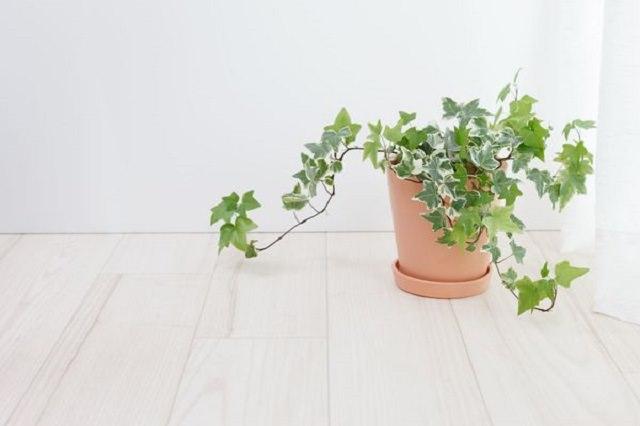
This plant is well known for its evergreen foliage. It is easy to maintain and needs as little as evenly moist soil and bright indirect light to grow well. The stems tend to grow long but can be easily controlled with pruning. For the best display, place your English ivy on a mantel where the stems can hang down luxuriantly.
17. Ponytail Palm

Contrary to its name, the ponytail palm isn’t a palm, in fact, it’s a succulent! AND; we love it. We listed it on our list of best succulents, easiest houseplants, and the best tall and large indoor plants. Don’t forget to check out these articles! It is a slow-growing plant, which means you don’t need to change the pot often. It performs best in sunny spots but never mind low lit areas receiving only bright indirect sunlight day long, also, the plant has low watering needs.
18. Spider Plant
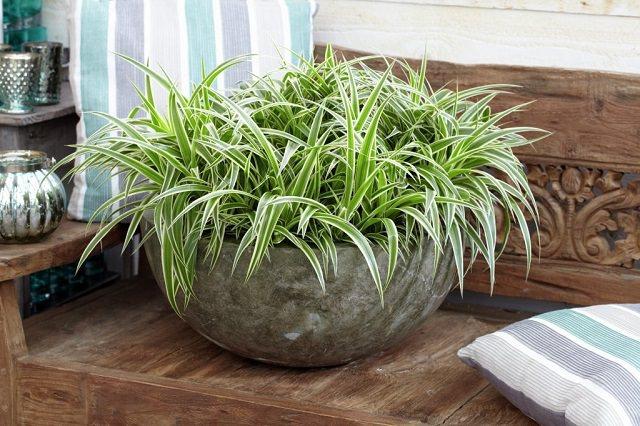
Spider plant is one of the most grown low maintenance houseplants. This forgiving plant doesn’t mind irregular watering and goes for weeks without water if grown in cool indoor conditions. Keeping the spider plant in low light conditions without direct sunlight is also possible.
Also Read: Plants that Grow without Sunlight
19. Rubber Tree Plant
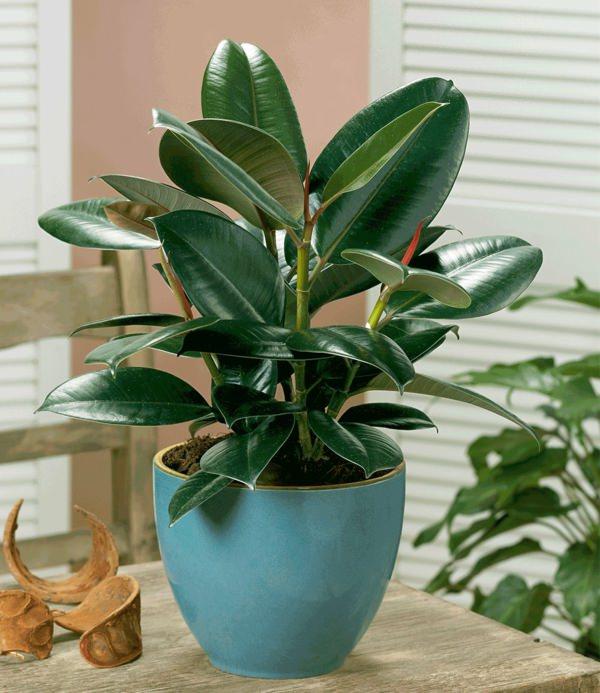
Rubber tree plant is an air purifying plant, it cleanses the formaldehyde. It is not difficult to grow and you can easily keep it in your home or office in a spot that is bright and receives a couple of hours of sunlight if possible. Avoid the exposure of the plant to the intense sun in afternoon.
There are plenty of good things about having plants in the house. For starters, they clean up the air and smell wonderful. Secondly, they add a much-needed dash of color and accentuate the appeal of your interior.
1. Snake Plant

The snake plant is a low-maintenance succulent plant that thrives on neglect pretty well. If you have had little success with indoor gardening , do give the snake plant a try. All types of snake plant tolerate low light and prefer being potbound. The fact that it has thick and waxy leaves means it can withstand scarcity of water for prolonged periods of time. To put it simply, the snake plant is apt for lazy gardeners and two-week vacationers.
2. Tillandsia (Air Plants)

Tillandsia is a genus of air plants native to the deserts, forests and mountains of central and South America. Air plants are epiphyte, meaning they don’t need soil to grow. All you need is to mist or water them up once in a week. Some of the air plants also absorb dust– All this makes them interesting and low-maintenance houseplants. The air plants are a perfect choice for people who wish to add a touch of green to their home without much work.
3. Cast-Iron Plant

The cast-iron plant is true to its name- it’s literally indestructible. It can withstand extremes of conditions, including low light, low humidity, as well as a wide spectrum of temperatures. And it grows slowly, which means you don’t need to repot it often.
4. Kalanchoe

Kalanchoe is a genus of tropical succulent flowering plants, from the wide-leafed and bright ‘Flapjack’ to the compact Kalanchoe manginii or Kalanchoe blossfeldiana. Kalanchoes are easy to grow, all they ask for is a sunny spot and an occasional spritz of water. Both these varieties are architecturally interesting and last for so long with little attention from your end.
5. Philodendron

Philodendron is a fast-growing foliage houseplant with bottle-green heart-shaped leaves, similar to pothos. This plant is extremely durable and adapts well to low-light areas. Philodendron looks great in hanging baskets or when branches trailing down from above.
6. ZZ Plant

The ZZ plant is also known as the eternity plant as it lasts so long that it’s practically a challenge to kill it! Its fat succulent leaves are thick, fleshy leafstalks are so durable that they can be easily mistaken for plastic. Since the plant is a slow grower, you may want to purchase a large plant if in case you need a big specimen for your house.
7. Bromeliad

Bromeliad, like pineapple, belongs to the bromeliacea family. This plant produces a delicate pink inflorescence that is beautiful to look at. It lasts long too, and occasionally produces new side shoots that replace the original ones.
8. Jade Plant

Native to South America, Jade is a low maintenance indoor plant. A succulent that retains water in its round, fleshy leaves. They thrive on neglect, so all you need to do is place them in a bright and airy spot and you’re done. As the thick trunk of jade plant easily gives it a mature look, it is also good for bonsai making.
Also Read: Best Plants and Trees for Bonsai
9. Succulents

Whether its Crown of thorns or any other succulent most of them are the plants that are easy to grow indoors. Especially for those who forget to water the plants for days. If you’re interested in knowing more about the succulents that are easy to grow click here!
10. Pothos

Pothos is a fast-growing, leafy vine with striking variegated leaves that are tolerant to both irregular watering and low light conditions. The vine extends quickly, often leaving a 10-feet long, green trail over shelves or furniture. Though it’s not as drought-tolerant as many other plants in this list and demands some attention from you when it comes to watering.
11. Peace Lily

The peace lily is an easy-to-care houseplant that tolerates low light and low humidity really well and it seems like it is made for indoor conditions. Glossy, lance-shaped foliage with arched stems that surround the central flower spikes. It produces spoon-shaped blooms in summer usually but some varieties do blossom intermittently throughout the year. As an added bonus, it purifies noxious substances like formaldehyde and carbon monoxide from the air. If growing in a large pot peace lily can even go without water for a month. These plants thrive better on under-watering conditions.
12. Begonia

Begonias, with lush, green leaves and satiny flowers paint a pretty picture. Though they are more often thought of as outdoor plants, the fibrous and rhizomatous variants perform well indoors. They prefer humid environments, so you may want to water them 2-3 times a week in summer to make sure they stay healthy and green. They are not that fussy about light/temperature conditions. Bright, indirect sunlight works fine for them.
13. Aloe

Especially, Aloe Vera is one of the most multi-purpose houseplants in Aloe genus you can choose for indoor gardening. Its plump, spiraling leaves ooze out a soothing gel that can be used for burns and cuts. You can use it to relieve sunburns and even ingest its gel for a minty, cool feeling. Aloe loves to have some direct light and a moderate spritz of water every week or two.
Also Read: How to Care for an Aloe Plant
14. Boston Fern

Renowned since the Victorian times, Boston fern is one of the most popular variants of fern. With its delicate, frilly leaves and lush, hanging fronds, it looks aesthetic when displayed in baskets hanging down from ceilings. Being the most drought-tolerant fern, it is easy to care for. All you have to do is to place it in a spot that gets indirect light, avoid dry air. Misting the plant in every few days also help by providing humidity.
15. Dracaena

The plants from Dracaena genus perform well as an indoor plant. They become great houseplants as they are tolerant to extreme indoor conditions. For instance, they survive well in under-watered soil. Additionally, they are not picky about light exposure. The young plants look great on tabletops, while the larger ones require sizable floor space improving the appearance of home and offices.
16. English Ivy

This plant is well known for its evergreen foliage. It is easy to maintain and needs as little as evenly moist soil and bright indirect light to grow well. The stems tend to grow long but can be easily controlled with pruning. For the best display, place your English ivy on a mantel where the stems can hang down luxuriantly.
17. Ponytail Palm

Contrary to its name, the ponytail palm isn’t a palm, in fact, it’s a succulent! AND; we love it. We listed it on our list of best succulents, easiest houseplants, and the best tall and large indoor plants. Don’t forget to check out these articles! It is a slow-growing plant, which means you don’t need to change the pot often. It performs best in sunny spots but never mind low lit areas receiving only bright indirect sunlight day long, also, the plant has low watering needs.
18. Spider Plant

Spider plant is one of the most grown low maintenance houseplants. This forgiving plant doesn’t mind irregular watering and goes for weeks without water if grown in cool indoor conditions. Keeping the spider plant in low light conditions without direct sunlight is also possible.
Also Read: Plants that Grow without Sunlight
19. Rubber Tree Plant

Rubber tree plant is an air purifying plant, it cleanses the formaldehyde. It is not difficult to grow and you can easily keep it in your home or office in a spot that is bright and receives a couple of hours of sunlight if possible. Avoid the exposure of the plant to the intense sun in afternoon.
2
1
文章
Colorful
2017年05月23日

Love growing plants indoors? Some of the best indoor vines and climbers that are easy to grow are listed here. Must check out!A house with indoor plants looks more lavish and expensive. That’s a fact!1. Heartleaf Philodendron
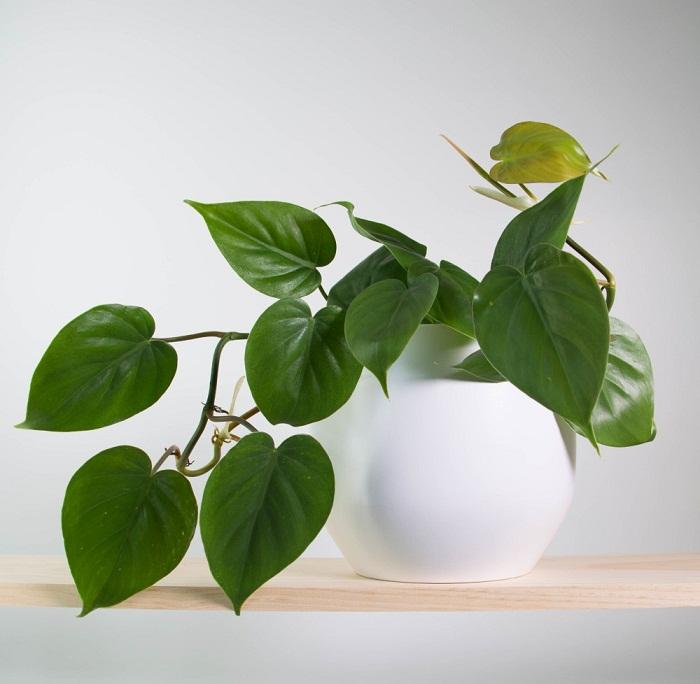
Heartleaf Philodendron is extremely easy to grow and great for beginners. It needs a moderate amount of light and prefers the soil to dry out between watering spells.
Also Read: Easiest Indoor Plants
2. Ivy
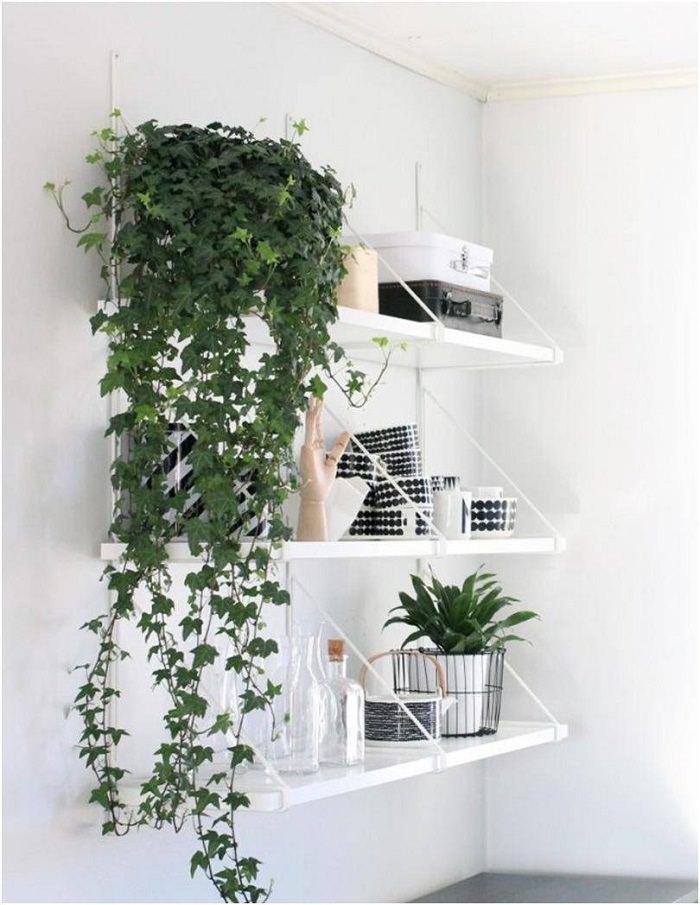
Ivy is one of the best indoor vines. It can easily adapt to many light conditions. This fast-growing vine has evergreen foliage that remains green even in winters. Plant it in a container that is wide and shallow rather than narrow and deep. Keep the pot in a spot that receives bright indirect sun.
Also Read: Best Indoor Plants According to Different Light Conditions
3. Pothos
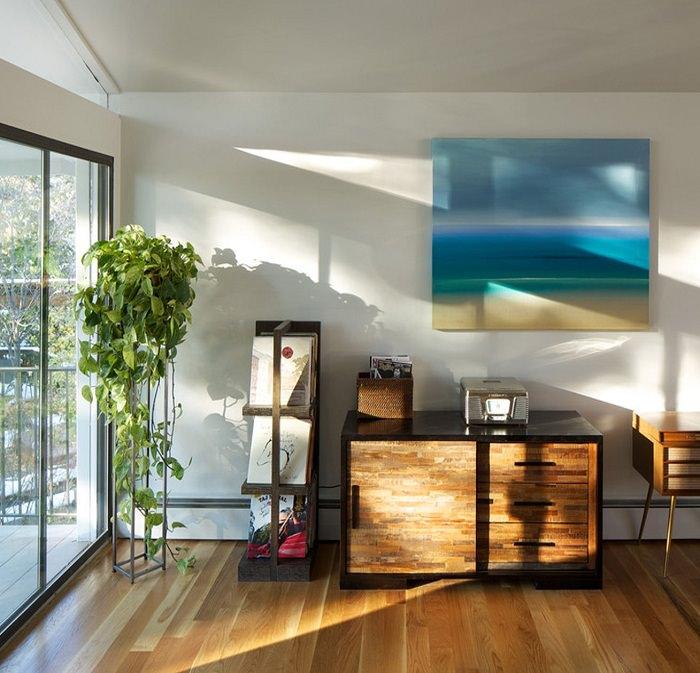
Plants of the pothos family are easiest to grow and most of them can even grow without direct sunlight. They become great houseplants for beginners. Attractive and hardy vine prefers bright indirect light and a draft free place. It can grow in low light and needs moist soil.
Also Read: Plants You can Grow Without Sunlight
4. Betel Leaf Plant
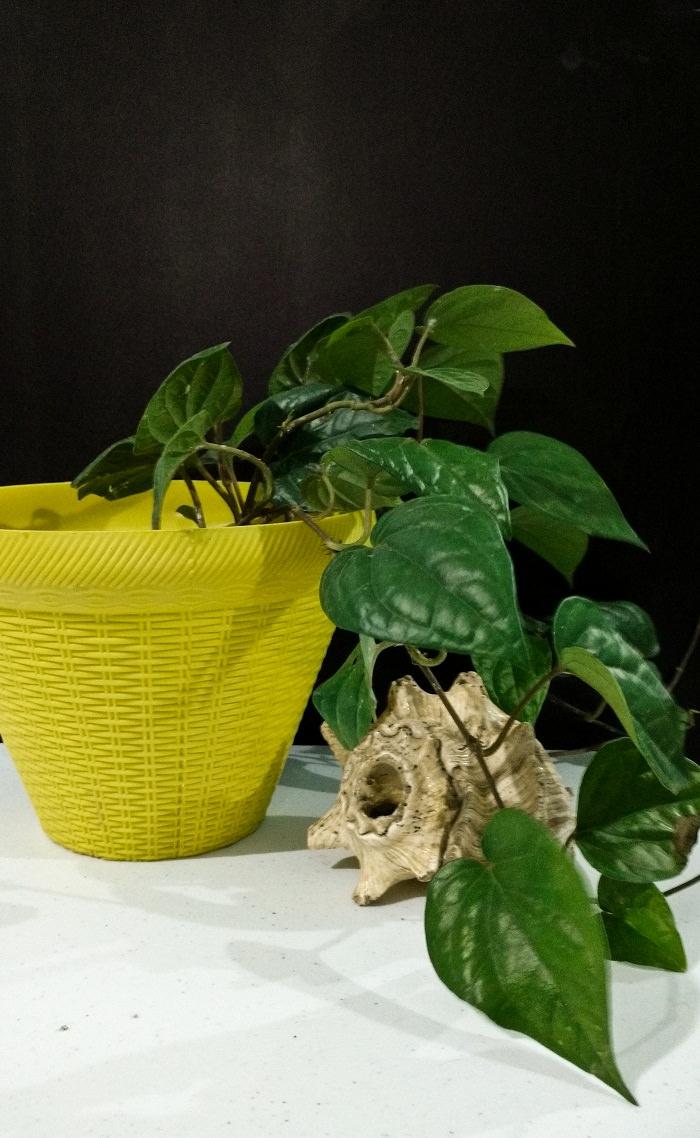
Betel leaf plant is very popular in South and East Asia, especially in the Indian subcontinent, Indonesia, Vietnam, and Thailand. This vine from pepper family has many culinary and medicinal uses. It can be tried indoors if space where you want to keep it receives part sun and remains slightly humid. All the other information is available here.
5. Jasmine

Many jasmine varieties can be grown indoors. If you keep this most fragrant vine in a bright spot where it receives some hours of direct sunlight daily, it’ll grow. The selection of jasmine varieties you want to plant indoors depends on the climate you live in. For colder regions, Jasminum polyanthum is the one you can try, whereas in tropics most of the plants from this species will grow.
6. Creeping Fig

It’s a slow growing creeper with small, leathery dark green foliage. Vigorous-growing, clinging, dense branches adhere to any surface and look enchanting. Be careful not to overwater creeping fig. Let the soil dry out before watering.
7. Arrowhead Plant

This elegant vine like houseplant prefers to be in a spot that is bright, needs moderate watering. Allow the soil to dry out between watering spells and make sure not to overwater it, as it may lead to root rot.
Also Read: Houseplants that are Harmful to Dogs
8. Hoya (Hoya spp.)

Beautiful waxy foliage and fragrant flowers, hoya looks stunning when grown indoors. The plant has low watering needs and doesn’t mind if you forget to water it occasionally. The trailing stems of this plant is approximately a foot in length along with clusters of aromatic waxy flowers.
Also Read: 99 Great Ideas to Display Houseplants
9. String Of Pearls
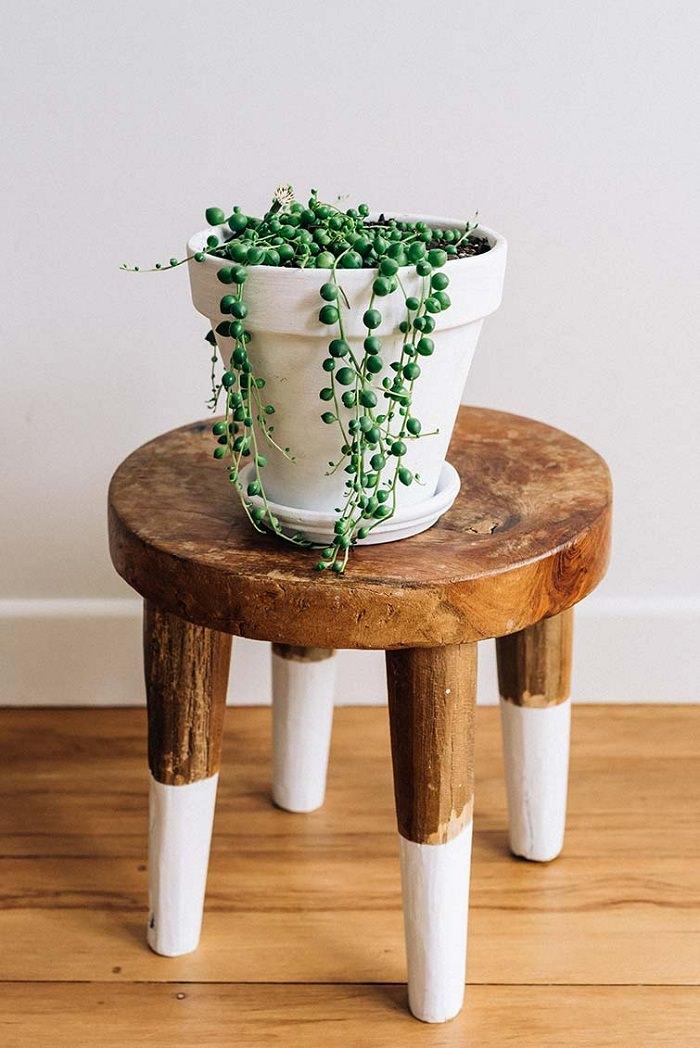
Growing string of pearls is easy, it is a low-maintenance creeper. This succulent tolerates prolonged drought and does well in a bright light position. You can also combine it with other houseplants to create a great appearance or it can be grown in a hanging basket.
10. Black Eyed Susan Vine

Black-eyed Susan vine can be grown indoors. Depending on your climate, this annual or perennial flowering plant can add a dramatic appeal to your rooms. Keep it near a window, where it receives a lot of sun.
11. Inch Plant
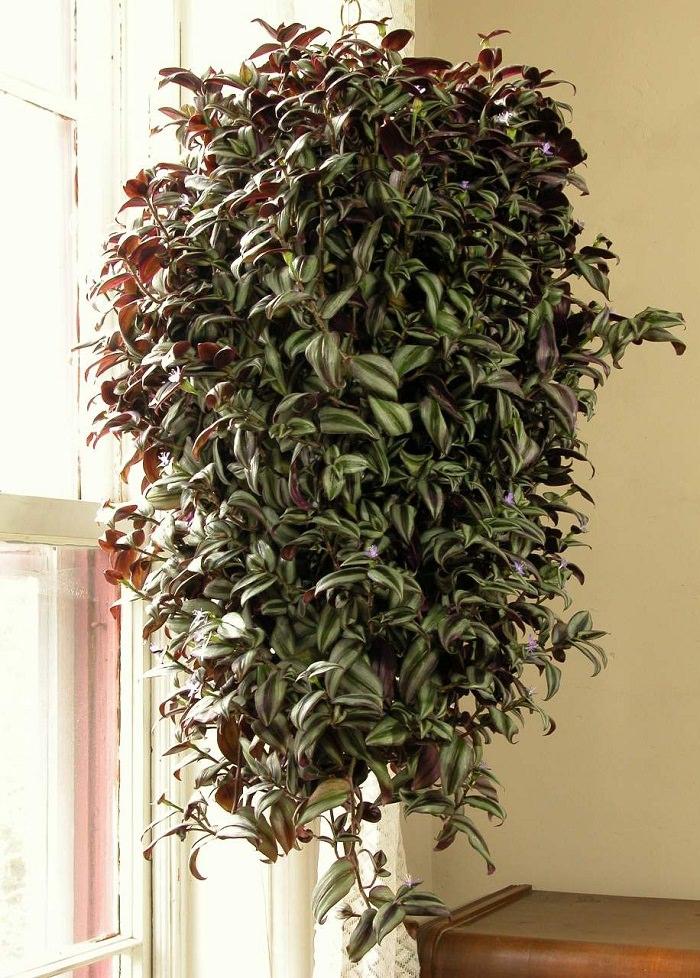
Also called “Wandering Jew” or “Purple heart”, this wonderful houseplant has beautiful trailing stems with attractive zebra patterned foliage that look stunning. Grow it in a pot or hanging basket, it’ll thrive. You can also keep this plant in dim light, but the markings on the foliage will fade.

Heartleaf Philodendron is extremely easy to grow and great for beginners. It needs a moderate amount of light and prefers the soil to dry out between watering spells.
Also Read: Easiest Indoor Plants
2. Ivy

Ivy is one of the best indoor vines. It can easily adapt to many light conditions. This fast-growing vine has evergreen foliage that remains green even in winters. Plant it in a container that is wide and shallow rather than narrow and deep. Keep the pot in a spot that receives bright indirect sun.
Also Read: Best Indoor Plants According to Different Light Conditions
3. Pothos

Plants of the pothos family are easiest to grow and most of them can even grow without direct sunlight. They become great houseplants for beginners. Attractive and hardy vine prefers bright indirect light and a draft free place. It can grow in low light and needs moist soil.
Also Read: Plants You can Grow Without Sunlight
4. Betel Leaf Plant

Betel leaf plant is very popular in South and East Asia, especially in the Indian subcontinent, Indonesia, Vietnam, and Thailand. This vine from pepper family has many culinary and medicinal uses. It can be tried indoors if space where you want to keep it receives part sun and remains slightly humid. All the other information is available here.
5. Jasmine

Many jasmine varieties can be grown indoors. If you keep this most fragrant vine in a bright spot where it receives some hours of direct sunlight daily, it’ll grow. The selection of jasmine varieties you want to plant indoors depends on the climate you live in. For colder regions, Jasminum polyanthum is the one you can try, whereas in tropics most of the plants from this species will grow.
6. Creeping Fig

It’s a slow growing creeper with small, leathery dark green foliage. Vigorous-growing, clinging, dense branches adhere to any surface and look enchanting. Be careful not to overwater creeping fig. Let the soil dry out before watering.
7. Arrowhead Plant

This elegant vine like houseplant prefers to be in a spot that is bright, needs moderate watering. Allow the soil to dry out between watering spells and make sure not to overwater it, as it may lead to root rot.
Also Read: Houseplants that are Harmful to Dogs
8. Hoya (Hoya spp.)

Beautiful waxy foliage and fragrant flowers, hoya looks stunning when grown indoors. The plant has low watering needs and doesn’t mind if you forget to water it occasionally. The trailing stems of this plant is approximately a foot in length along with clusters of aromatic waxy flowers.
Also Read: 99 Great Ideas to Display Houseplants
9. String Of Pearls

Growing string of pearls is easy, it is a low-maintenance creeper. This succulent tolerates prolonged drought and does well in a bright light position. You can also combine it with other houseplants to create a great appearance or it can be grown in a hanging basket.
10. Black Eyed Susan Vine

Black-eyed Susan vine can be grown indoors. Depending on your climate, this annual or perennial flowering plant can add a dramatic appeal to your rooms. Keep it near a window, where it receives a lot of sun.
11. Inch Plant

Also called “Wandering Jew” or “Purple heart”, this wonderful houseplant has beautiful trailing stems with attractive zebra patterned foliage that look stunning. Grow it in a pot or hanging basket, it’ll thrive. You can also keep this plant in dim light, but the markings on the foliage will fade.
4
4
文章
lenny
2017年05月23日
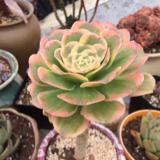
Growing ornamental grasses is fun. You can decorate your house, garden, balcony or patio with them. So, what are the best ornamental grasses for containers? We named a few, check out.
Grasses are not only for lawn or ground cover. They can add a visual charm at any place if you grow them in containers.

Growing and care for ornamental grasses is relatively easy. You can start to grow them from seeds.
Before you head on to see the list of best ornamental grasses below, learn how to care for them here!
Growing ornamental grasses in containers is an excellent way to feature grasses without letting them branch out and taking over your whole garden. Container grown grasses are also easier to control, and they look stunning when grown with flowers.
Growing Ornamental Grasses in Pots
Ornamental grasses are an excellent way to create privacy in the garden, especially on a patio, balcony or rooftop. Some of the grasses are extremely resistant to drought and grow rapidly. And there are those that love moisture; you can choose according to the growing conditions you’re providing.
Also read: Balcony Privacy Ideas
Growing Position
Decide where you want to grow the ornamental grass. Ornamental grasses thrive in a spot that gets at least five to six hours of sunlight daily.
Choosing Right Pot
Choosing a right pot is also necessary for growing ornamental grasses in containers. Ensure proper drainage and see if it is wide enough to let the grass spread and deep enough to support the root system. You should also care about the looks of a container.
Also Read: Container Ideas for Patio and Balcony
RequirementsSoil
Use a mix of one part compost, one part top soil and one part perlite for making an excellent growing medium for grass.
Watering
A general rule is to water your plants only when the top two inch of soil is dry. However, different grass varieties have different needs, and some even like to sit in water so make sure to do a proper research about the grass variety you’re growing.
Also Read: How to Water Container Plants
FertilizerFertilize annually in spring with slow-release 3 – 1 – 2 fertilizer. For tropics, feed your plants in fall and winter. Take care not to over-fertilize grass and strictly follow the manufacturer’s instructions.11 Best Ornamental grasses for containers1. Bamboo Muhly

Almost fern-like but super fine in texture, bamboo muhly grass grows easily in USDA Zones 8 to 11. It takes its name from its notched stems and feathery foliage. It thrives in the tropical climate, loves sun and heat and grows well in containers.
2. Japanese Sweet Flag

This low growing (12″) ornamental grass is good to grow in containers if you don’t want to grow a tall variety. Japanese sweet flag is low maintenance and grows in moist and soggy soil and semi-shade to full sun in USDA zones 6 to 9.
You can grow this ornamental grass with other moisture loving plants or with aquatic plants.
Also Read: How to make a water pond in container
3. Red Fountain Grass

USDA Zones 9 to 11. Beautiful red fountain grass looks stunning; it’s an arching upright plant. Fill the pot with its rich burgundy color of foliage, and you’ll see how beautiful it looks.
4. Japanese Forest Grass

USDA Zones 5 to 9. Once you see Japanese forest grass growing in a nearby, nursery, you’ll love to pick it. It’s the plant you can grow in the shade, its foliage comes in yellow-green stripes and grows in a clump. Grow this ornamental grass in a dark ceramic pot for an absolutely stunning look.
5. Blue Lyme Grass

Blue lyme grass grows aggressively in all kinds of soil. It grows in both tropical and nontropical climate under USDA Zones 4 to 10. The sword-like foliage grows up to 3 – 4 feet that fold as they grow tall. This bold and spiky grass forms beige colored flower heads usually in summer.
6. Fiber Optic Grass

Image Credit: Cocoon Home
USDA Zones 10, 11. Fiber optic grass grows well in tropics, in a colder climate, you can grow it as annual. It hangs down gently in a curve and creates an unusual effect. It’s one of the best ornamental grasses you would like to grow in containers.
Fiber optic is a low growing, fine textured grass that can be planted in full to partial sun. It loves moist soil. You can also grow it indoors; we also added it in our list of most BEAUTIFUL HOUSEPLANTS!7. New Zealand flax

USDA Zones 9 to 11. New Zealand flax is perennial in frost-free areas, excellent for tropical regions. You can grow it in containers, it looks beautiful and gives a tropical feel. This grass like beautiful foliage plant comes in colors of green, copper, red and gold.
8. Sedge

Sedge looks like grass, but it is not. When grown in containers, its leaves glow in the sun and look fantastic while the blades rustle in the slightest breeze. Sedge grows well in warm sunny conditions.
Also Read: Container Garden Design Tips
9. Miscanthus

USDA Zones 6 to 9. One of the most popular ornamental grasses, it grows well in the container. Available in many varieties, it looks picturesque in the morning sun.
10. Blue Oat Grass

USDA Zones 4 to 9 Grow this cool blue – gray grass in a pot with bright flowers to create an aesthetic look on your patio, terrace or balcony garden. Blue oat grass is low maintenance and grows well in partial shade.
11. Feather Reed Grass

Feather reed grass can be grown in the sun and partial shade both. It grows well in USDA Zones 4 to 9. Feather reed grass looks attractive as a focal point– on a patio if grown in a container.
Also Read: Best Shrubs to Grow in Containers
Grasses are not only for lawn or ground cover. They can add a visual charm at any place if you grow them in containers.

Growing and care for ornamental grasses is relatively easy. You can start to grow them from seeds.
Before you head on to see the list of best ornamental grasses below, learn how to care for them here!
Growing ornamental grasses in containers is an excellent way to feature grasses without letting them branch out and taking over your whole garden. Container grown grasses are also easier to control, and they look stunning when grown with flowers.
Growing Ornamental Grasses in Pots
Ornamental grasses are an excellent way to create privacy in the garden, especially on a patio, balcony or rooftop. Some of the grasses are extremely resistant to drought and grow rapidly. And there are those that love moisture; you can choose according to the growing conditions you’re providing.
Also read: Balcony Privacy Ideas
Growing Position
Decide where you want to grow the ornamental grass. Ornamental grasses thrive in a spot that gets at least five to six hours of sunlight daily.
Choosing Right Pot
Choosing a right pot is also necessary for growing ornamental grasses in containers. Ensure proper drainage and see if it is wide enough to let the grass spread and deep enough to support the root system. You should also care about the looks of a container.
Also Read: Container Ideas for Patio and Balcony
RequirementsSoil
Use a mix of one part compost, one part top soil and one part perlite for making an excellent growing medium for grass.
Watering
A general rule is to water your plants only when the top two inch of soil is dry. However, different grass varieties have different needs, and some even like to sit in water so make sure to do a proper research about the grass variety you’re growing.
Also Read: How to Water Container Plants
FertilizerFertilize annually in spring with slow-release 3 – 1 – 2 fertilizer. For tropics, feed your plants in fall and winter. Take care not to over-fertilize grass and strictly follow the manufacturer’s instructions.11 Best Ornamental grasses for containers1. Bamboo Muhly

Almost fern-like but super fine in texture, bamboo muhly grass grows easily in USDA Zones 8 to 11. It takes its name from its notched stems and feathery foliage. It thrives in the tropical climate, loves sun and heat and grows well in containers.
2. Japanese Sweet Flag

This low growing (12″) ornamental grass is good to grow in containers if you don’t want to grow a tall variety. Japanese sweet flag is low maintenance and grows in moist and soggy soil and semi-shade to full sun in USDA zones 6 to 9.
You can grow this ornamental grass with other moisture loving plants or with aquatic plants.
Also Read: How to make a water pond in container
3. Red Fountain Grass

USDA Zones 9 to 11. Beautiful red fountain grass looks stunning; it’s an arching upright plant. Fill the pot with its rich burgundy color of foliage, and you’ll see how beautiful it looks.
4. Japanese Forest Grass

USDA Zones 5 to 9. Once you see Japanese forest grass growing in a nearby, nursery, you’ll love to pick it. It’s the plant you can grow in the shade, its foliage comes in yellow-green stripes and grows in a clump. Grow this ornamental grass in a dark ceramic pot for an absolutely stunning look.
5. Blue Lyme Grass

Blue lyme grass grows aggressively in all kinds of soil. It grows in both tropical and nontropical climate under USDA Zones 4 to 10. The sword-like foliage grows up to 3 – 4 feet that fold as they grow tall. This bold and spiky grass forms beige colored flower heads usually in summer.
6. Fiber Optic Grass

Image Credit: Cocoon Home
USDA Zones 10, 11. Fiber optic grass grows well in tropics, in a colder climate, you can grow it as annual. It hangs down gently in a curve and creates an unusual effect. It’s one of the best ornamental grasses you would like to grow in containers.
Fiber optic is a low growing, fine textured grass that can be planted in full to partial sun. It loves moist soil. You can also grow it indoors; we also added it in our list of most BEAUTIFUL HOUSEPLANTS!7. New Zealand flax

USDA Zones 9 to 11. New Zealand flax is perennial in frost-free areas, excellent for tropical regions. You can grow it in containers, it looks beautiful and gives a tropical feel. This grass like beautiful foliage plant comes in colors of green, copper, red and gold.
8. Sedge

Sedge looks like grass, but it is not. When grown in containers, its leaves glow in the sun and look fantastic while the blades rustle in the slightest breeze. Sedge grows well in warm sunny conditions.
Also Read: Container Garden Design Tips
9. Miscanthus

USDA Zones 6 to 9. One of the most popular ornamental grasses, it grows well in the container. Available in many varieties, it looks picturesque in the morning sun.
10. Blue Oat Grass

USDA Zones 4 to 9 Grow this cool blue – gray grass in a pot with bright flowers to create an aesthetic look on your patio, terrace or balcony garden. Blue oat grass is low maintenance and grows well in partial shade.
11. Feather Reed Grass

Feather reed grass can be grown in the sun and partial shade both. It grows well in USDA Zones 4 to 9. Feather reed grass looks attractive as a focal point– on a patio if grown in a container.
Also Read: Best Shrubs to Grow in Containers
0
0
文章
Selina
2017年05月23日

These 8 pictures might interest you if you’re searching for patio or porch design ideas for inspiration.Porch Design Ideas1.

The house of this wall is made of wooden planks arranged vertically and painted gray to resemble the surroundings. Also, the hardwood floor is giving a unique touch to this vintage themed Australian house.
2.
The front of this house is looking more beautiful by the addition of these elegant front door planters, a combination of ferns, potato vine, and hydrangea is looking great.
3.
This lovely front porch with a rocking chair becomes more lively and good looking in appearance due to the window box filled with flowers.
4.
The birdcage planter and pallet sofa are enhancing the appearance of this small balcony. A pallet sofa is good to have on a patio, balcony or terrace. It is cozy, cheap and easy to make. Read our DIY pallet ideas.
5.
The lovely theme of blue and white color is making this porch look spacious and elegant and upcycled shutters that are used as a porch divider are an apt way to use old materials.
6.
Beautiful urn, warm colored cut flowers, and colorful curtains are making this porch animated.
7.
If your porch has space then a porch swing can be an interesting addition there.
8.

The house of this wall is made of wooden planks arranged vertically and painted gray to resemble the surroundings. Also, the hardwood floor is giving a unique touch to this vintage themed Australian house.
2.

The front of this house is looking more beautiful by the addition of these elegant front door planters, a combination of ferns, potato vine, and hydrangea is looking great.
3.

This lovely front porch with a rocking chair becomes more lively and good looking in appearance due to the window box filled with flowers.
4.

The birdcage planter and pallet sofa are enhancing the appearance of this small balcony. A pallet sofa is good to have on a patio, balcony or terrace. It is cozy, cheap and easy to make. Read our DIY pallet ideas.
5.

The lovely theme of blue and white color is making this porch look spacious and elegant and upcycled shutters that are used as a porch divider are an apt way to use old materials.
6.

Beautiful urn, warm colored cut flowers, and colorful curtains are making this porch animated.
7.

If your porch has space then a porch swing can be an interesting addition there.
8.

0
0
文章
Abigal
2017年05月22日

The great outdoors and food just kinda go together, don’t they? Think camping, picnics, and of course, BBQ’s! So instead of schlepping all your food, dishes and cooking prep through the house over and over, how about making yourself an amazing outdoor kitchen or grilling station? The cook in your life will be out where the people are, and those who are helping with the prep won’t be stuck indoors. Ok, there is also that cool feeling of cooking outside. Don’t know what it is, it’s kind of a primal, survival deal. It just tastes better and feels oh so satisfying! So let’s do it! Tackle one of these DIY projects this weekend, and wait for the jealous ooo’s and ahhh’s from your guests!

Our feature project above, is a DIY outdoor serving center from ‘Build Something’. The tutorial has complete plans and cutting instructions. We love that this is made of cedar, and also the sliding top that can still be used as a counter when it’s open. And it’s a pretty piece of furniture too!
Wanna have everything you need to grill at your fingertips? AND have room to set things while you are at the BBQ? This DIY rolling outdoor island has complete building plans and instructions, from Elisha at ‘Pneumatic Addict’. This one has it all, and it rolls out of the way when not in use too!

This DIY grill station from Angela at ‘Unexpected Elegance’ is ah-mazing! Why? She not only made it practical, it’s pretty! She used stone veneer over a sheet metal frame that she created herself. A lot of value for a weekend project! Easy instructions with photos.

This patio cooler stand from ‘Eddie and Steph‘ is a great idea, with a short little tutorial. A DIY’er with some projects under their belt could take this idea and make it amazing! There is nothing worse than having to go inside every 5 minutes for more drinks!

Here is another idea straight from a Pinterest user… Using a dorm fridge to make an outdoor refrigerator in a really pretty box! (See similar project with plans at the end!)

These DIY outdoor concrete countertops are kind of a two parter… The actual concrete counter how-to is from ‘Kara Paslay’, but you will find a general tutorial on making a countertop for outdoors at ‘HomeDit‘. This is a more permanent outdoor kitchen design that can add value to your home.

From ‘Old World Garden Farms’ via ‘Hometalk’, this rustic outdoor summer kitchen is the perfect look for a farm style home. (Or one where you just want to add some rustic charm!) Photos and instructions. We are loving’ on that corrugated metal!

Our last two are from one of our favorite woodworker sites, ‘Ana White’. This BBQ built in was uploaded by one of her readers, and unfortunately they did not share which of Ana’s free plans they used! (You can search on the site though!)

This last one is a wooden cooler stand from ‘Ana White‘ done by ‘Birds and Soap, and this time, we found the tutorial to make this outdoor cooler project. Be sure to scroll down to find the drawings and plans. Which version would you make?


Our feature project above, is a DIY outdoor serving center from ‘Build Something’. The tutorial has complete plans and cutting instructions. We love that this is made of cedar, and also the sliding top that can still be used as a counter when it’s open. And it’s a pretty piece of furniture too!
Wanna have everything you need to grill at your fingertips? AND have room to set things while you are at the BBQ? This DIY rolling outdoor island has complete building plans and instructions, from Elisha at ‘Pneumatic Addict’. This one has it all, and it rolls out of the way when not in use too!

This DIY grill station from Angela at ‘Unexpected Elegance’ is ah-mazing! Why? She not only made it practical, it’s pretty! She used stone veneer over a sheet metal frame that she created herself. A lot of value for a weekend project! Easy instructions with photos.

This patio cooler stand from ‘Eddie and Steph‘ is a great idea, with a short little tutorial. A DIY’er with some projects under their belt could take this idea and make it amazing! There is nothing worse than having to go inside every 5 minutes for more drinks!

Here is another idea straight from a Pinterest user… Using a dorm fridge to make an outdoor refrigerator in a really pretty box! (See similar project with plans at the end!)

These DIY outdoor concrete countertops are kind of a two parter… The actual concrete counter how-to is from ‘Kara Paslay’, but you will find a general tutorial on making a countertop for outdoors at ‘HomeDit‘. This is a more permanent outdoor kitchen design that can add value to your home.

From ‘Old World Garden Farms’ via ‘Hometalk’, this rustic outdoor summer kitchen is the perfect look for a farm style home. (Or one where you just want to add some rustic charm!) Photos and instructions. We are loving’ on that corrugated metal!

Our last two are from one of our favorite woodworker sites, ‘Ana White’. This BBQ built in was uploaded by one of her readers, and unfortunately they did not share which of Ana’s free plans they used! (You can search on the site though!)

This last one is a wooden cooler stand from ‘Ana White‘ done by ‘Birds and Soap, and this time, we found the tutorial to make this outdoor cooler project. Be sure to scroll down to find the drawings and plans. Which version would you make?

0
0
文章
Abigal
2017年05月21日


I happen to live in a house just one street in from a river canyon. Love the access to the canyon trails. Hate the mosquitos! In fact, they can make my garden nearly impossible to enjoy in the early evening hours in Spring and Summer, which of course is the best time to enjoy it! So I am always on the hunt for a better mosquito trap, or repellent, or any device to keep them away! We all know about Deet, and other chemical repellants. We also have all heard about the possible dangers associated with them. We tried to find some natural solutions.
Here they are, the best ways we have found on the web to zap those mosquitos… or just plain ol’ make ’em disappear!
Disclaimer : We have not tried out all of these, so I can’t guarantee their effectiveness. Would love for you to share in comments whether they work for you, or if you know some other ideas that we haven’t mentioned!
Your first option is to plant mosquito repellant plants in your garden. I think this works great if you can plant enough in the garden in your immediate area… One plant is not gonna cover it. A better option might be to plant them into containers that you can move and group around a patio or table area when needed. Here are the top three most popular repellent plants that are pretty, too!
Lemongrass
Lemongrass is a tender tropical grass that will not survive the winter in areas colder than zone 8, so is best used in containers. It is the most popular and, reportedly, effective mosquito repelling plant!

Sage
Sage is great as a garden or potted plant, and comes in ornamental varieties that are purple and golden as well. (I grow them both in my garden!) Also great tossed onto a BBQ or fire pit to add some repellent properties to the air. Learn how to grow sage.

Lavender
I also grow a lot of lavender, and I love the smell. I actually go out and pick a lavender stem when I wander my garden just to enjoy the stress relieving scent. Also a great mosquito and fly repellent. Learn how to grow lavender.
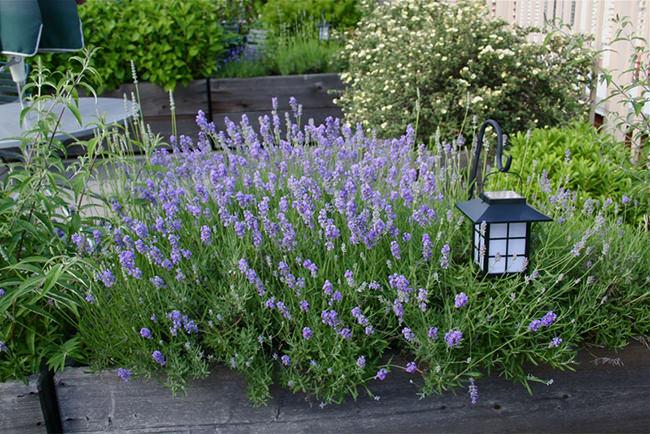
A couple others worth a quick mention? Basil, catnip, rosemary and mint.
Ok, so you’ve planted a few great plants and are ready to move on to more.
Start with this DIY all natural bug spray by Tasha from ‘Designer Trapped’… She even breaks down why this is a better value than store bought bug sprays, not to mention… did we mention? All natural!
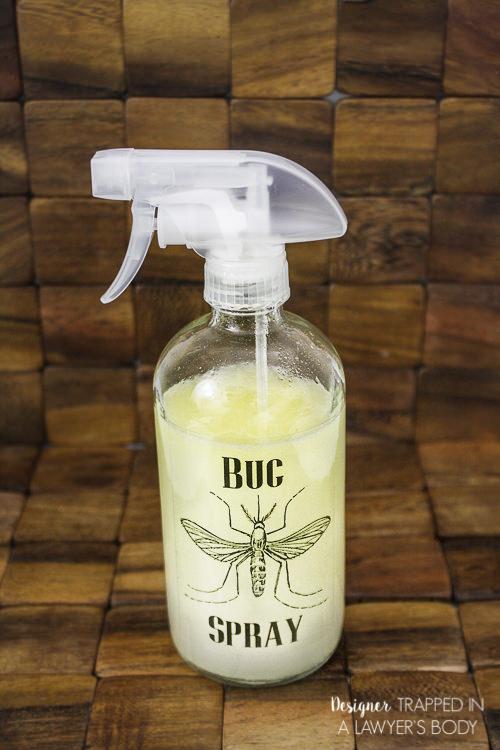
Charlene at ‘My Frugal Adventures’ has another recipe, this one is a homemade mosquito repellent with just three ingredients!

From Stephanie at ‘Garden Therapy’, learn how to make citronella candles with her budget friendly tutorial… These would be great to combine with the mosquito repellent plants! She has a great garden projects book out as well, check it out while you are there!
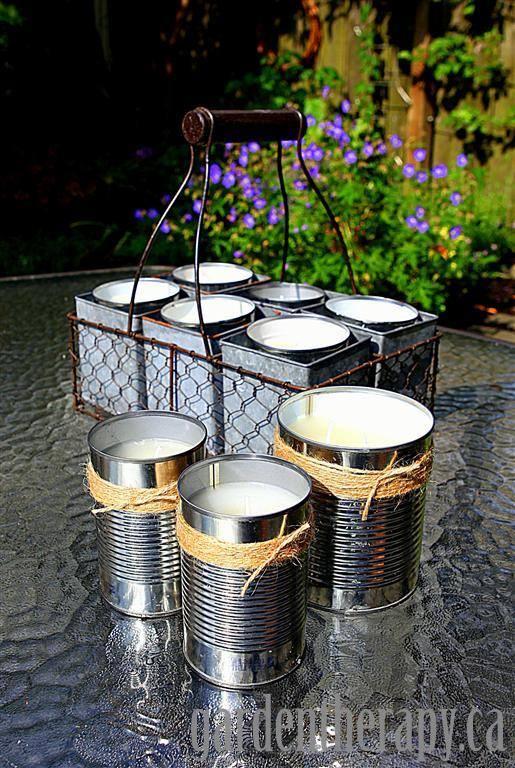
Make these pretty mason jar citronella candles from ‘Marty’s Musings’ for a charming way to repel mosquitos. She even tells you where to get the liquid citronella fuel.

From Melissa Caughey at ‘HGTV Gardens’, make these herbal insect repelling bundles that you can use in a fire pit or BBQ to keep bugs away. You just let them smolder at the edge of any fire source, and voila! No more bugs, and the air smells amazing!
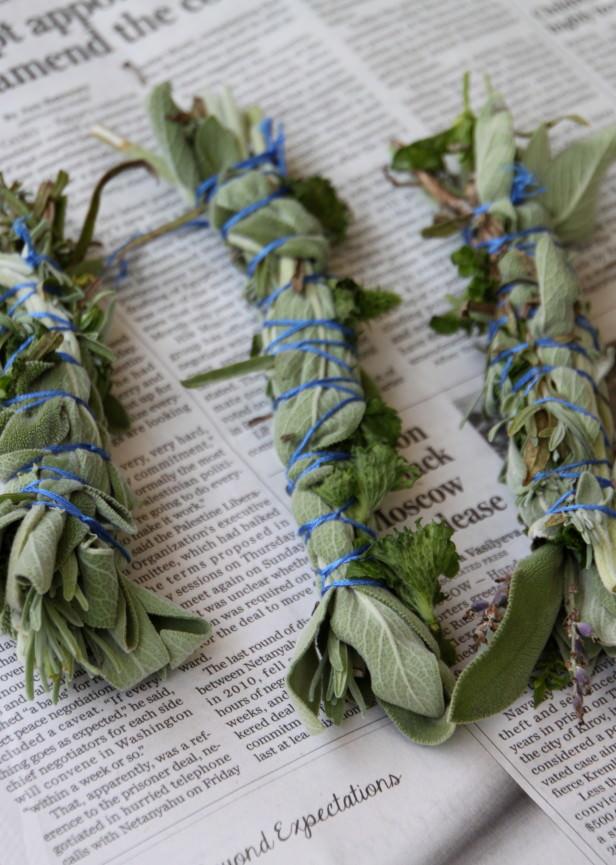
Ok, this one is pure genius. Jessica at ‘Mom 4 Real’ shows us how to make this cute DIY mosquito repelling bracelet! And of course, it’s all natural as well.

This homemade mosquito trap from ‘Ehow’ is inexpensive and easy to make. It also comes with some controversy as to how effective it is, and whether it will also trap bees, which of course, we need! I understand if you add a little vinegar to these traps, bee’s will not be as attracted… This is worth a try, but one note. As with any insect traps, don’t place them near your seating areas. The trap are meant to attract the bugs, so if you put it too close to people, you are bringing them right to you!


Another quick DIY mosquito spray? From ‘Mint Juleps N Muddin‘, try Listerine in a bottle. They suggest the original.
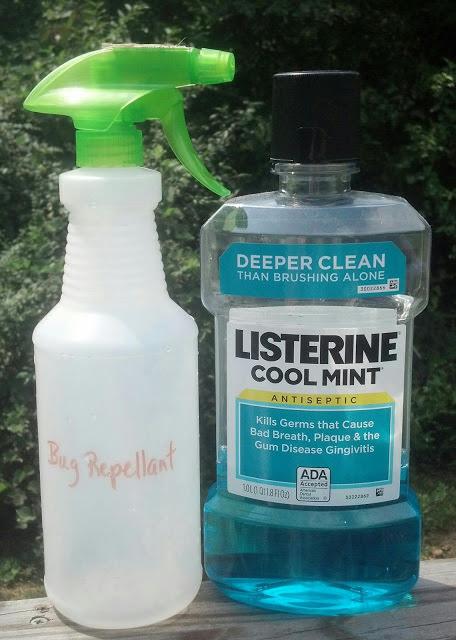
Use Vicks Vapor Rub around your wrists and ankles as a natural repellent, from ‘Divine Caroline‘.

So our last trick for you is a simple one. We ran across this article on this low tech mosquito deterrent from the ‘NY Times‘. Using the flow of a fan across your seating or patio space can give just enough air movement to keep away mosquitos. Mosquitos are notoriously weak flyers, so this can be pretty effective. Try it!

0
1


